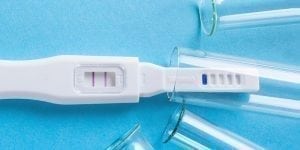Being told that you need a procedure done to improve your health can cause a lot of concern. When your gynecologist breaks that news to you, it can be even more nerve-wracking. If your doctor has suggested getting a hysteroscopy, it may be for several reasons including fertility or unusually heavy periods. Understanding what a hysteroscopy is can help you prepare for the procedure and relieve the anxiety of not knowing what to expect.
Taking the time to read about this procedure so you know what to anticipate before, during and after can put your mind at ease.
Hysteroscopy Overview
A hysteroscopy is a procedure performed by your practitioner using a thin flexible tube equipped with a light called a hysteroscope. This allows the doctor to examine the inside of your cervix and uterus for diagnostic or operative purposes.
Diagnostic
This type is used to confirm the results of other tests. It may also be used in combination with other diagnostic procedures so that the outside of your uterus, fallopian tubes and ovaries can also be examined.
Operative

- Removal of noncancerous growths (fibroids or polyps)
- Removal of scar tissue caused by Asherman’s syndrome leading to abnormal menstrual flow or infertility
- To correct abnormal tissue formations that occur during embryo development called septums, which segments or divides the uterine cavity and can cause infertility, early delivery and recurrent miscarriages early or late in pregnancy
- To rectify abnormally heavy or lengthy menstrual cycles, bleeding between cycles or bleeding after menopause
Signs You May Need a Hysteroscopy
This procedure may be recommended if you are experiencing any of these issues:
- Unexplained spotting or bleeding in postmenopausal women
- Unusually heavy or long menstrual bleeding
- Bleeding between cycles
- Congenital conditions including septums
- Polyps or fibroids
- Scarring caused by previous surgeries or infections
- Recurring miscarriage
- Infertility
- Locate an intrauterine device (IUD)
- For sterilization purposes
How to Prepare for Hysteroscopy
- One of the best ways to prepare for any procedure is to discuss it with your doctor. Be sure to ask any questions you have so that they can be clarified and allow your doctor to address any concerns.
- Take care of any paperwork given to you from the office and double-check procedural costs with your insurance to avoid sticker shock later on.
- You may be given a physical exam and some other tests to ensure your health is good enough to proceed.
- Follow presurgery instructions, which may include fasting in cases where anesthesia is going to be used.
- Let your doctor know if there is a chance you could be pregnant, if you have sensitivities to medications or latex, and if you are currently taking any medications or supplements.
- Find someone to drive you home after the procedure.
- Keep accurate track of your menstrual cycle so that the surgery can be scheduled at the optimal time.
- Dress comfortably.
The Hysteroscopy Procedure
The surgery will be scheduled in the week following your menstrual cycle. Performed in your doctor’s office or at an outpatient clinic, the following steps will occur:
- You will change into a hospital gown and be asked to empty your bladder.
- An IV may be placed.
- Sedatives may be administered to help you relax.
- You will be asked to lie on your back with your feet positioned in stirrups.
- An anesthetic may be given.
- A vaginal speculum may be used to accommodate the scope.
- Your cervix may be dilated enough for the hysteroscope to pass through.
- The scope is inserted until it reaches the uterus.
- Your uterus is expanded using carbon dioxide or a liquid solution to increase visibility and clear mucus or blood.
- Using the light, your doctor can proceed with the examination.
- If any abnormality is discovered, operative measures can immediately be performed using surgical tools inserted through the same tube. This can include tissue removal, biopsy samples or growth removal.
The time it takes to finish the surgery varies with operative procedures lasting longer than diagnostic ones. Any additional procedures done concurrently can also increase completion time. Generally, procedures can last anywhere from five minutes to over an hour.
Recovering from a Hysteroscopy

Some typical symptoms you may experience during recovery are:
- Uterine cramping
- Vaginal bleeding
- Belly, shoulder or gas pain
It is recommended that you refrain from douching, having sexual intercourse or inserting anything into the vagina for at least two weeks following the procedure.
Follow aftercare instructions properly to ensure a fast recovery and to minimize infection. This includes only taking pain relievers that are prescribed by your doctor as some medications can increase bleeding.
You can return to your regular diet and daily activity unless otherwise instructed by your doctor.
If you experience any fever, severe pain in your abdomen or unusually heavy bleeding or discharge, call your doctor to make sure it is not something serious.
Risks and Benefits
For some women, a hysteroscopy is not an option. Rest assured your physician will consult with a specialist to make certain it is the best course of action for your situation.
Due to its noninvasive nature, benefits include:
- Fast recovery
- Outpatient
- Avoiding the need for a hysterectomy
- Avoiding invasive procedures
- Minimal aftercare medication
Hysteroscopy is an exceptionally safe procedure with associated risks occurring in less than 1% of cases. Some of these rare risks can include:
- Infection
- Uterine perforation
- Heavy bleeding
- Anesthetic risks
- Scarring
- Reactions to the anesthetic agents or solutions used during surgery
- Gas embolism





